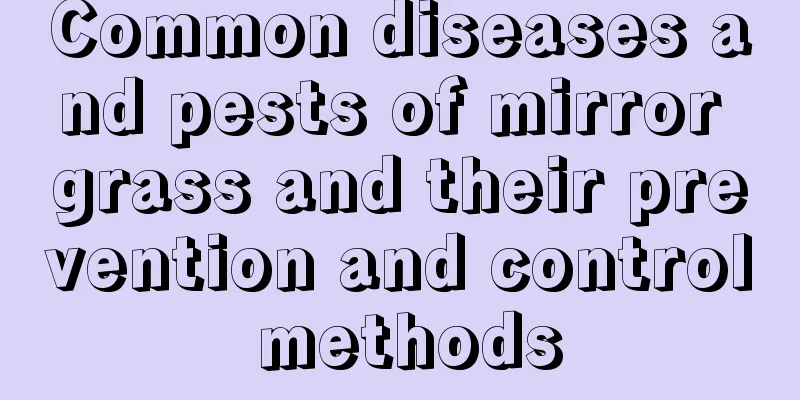Common diseases and pests of mirror grass and their prevention and control methods

Common diseases of mirror grass and their prevention and control methodsanthraxAnthracnose is an important disease that harms foliage flowers and is a fungal disease. It often occurs in hot and humid seasons, especially the hot and humid rainy season, and can also be caused by excessive application of nitrogen fertilizer. Symptoms: Small brown spots appear on the leaves at the early stage of the disease, which then expand into round or oval shapes. The spots gradually dry up, and in severe cases the entire plant is infected. Leaf spotSymptoms of leaf spot disease: The pathogen infects the leaves, and the spots on the leaves are circular, which later expand into large irregular spots and produce ring patterns. The spots change from reddish brown to dark brown, with gray-brown in the center. Prevention and control methods: Remove diseased leaves and add pesticides for prevention and control. Clear the diseased leaf parts promptly and spray the pesticide. The pesticide can be 1000 times diluted 50% thiophanate. Common Pests of Mirror Grass and Their Control MethodsScale insectsBasic symptoms of scale insect pests: Scale insects attach to the surface of mirror grass leaves, and their secretions contaminate the leaves, even causing serious consequences such as leaf withering. Causes of scale insect occurrence: untimely disinfection and breeding of insect eggs. Prevention and control methods: Spray the pesticide in time during the nymph stage. You can use 1000 times diluted 40% oxydemeton-methyl, spray once every 8 days, for 2 to 3 times in a row. Mixing white wine with water can also effectively kill scale insects without damaging the leaves of mirror grass. Cotton scaleSymptoms of the cottony scale: They often gather on leaf buds, tender buds, and new shoots to cause damage. In severe cases, the leaves turn yellow, causing the branches to wither, and eventually the entire branch or plant to die. Even if some branches and leaves remain, they will become gray and black due to sooty mold caused by their excrement, seriously affecting their ornamental value. Prevention and control methods: Check at any time, pinch out the female insects and egg sacs with your hands or tweezers, or cut off the insect branches and leaves. During the migration period of newly hatched nymphs, you can spray 1000 times diluted 40% oxydemeton-methyl, 1000 times diluted 50% fenitrothion, or 400-600 times diluted ordinary laundry detergent, once every 2 weeks or so, and spray 3-4 times in a row. |
<<: Diseases and prevention methods of Gloxinia
>>: Diseases of Palm Bamboo and Their Prevention and Control
Recommend
Disease and Pest Control of Peony
Dicentra leaf spot In the early stages of leaf sp...
Is it suitable for crabapple to have a large pot or a small pot?
Is it better to use a large or small pot for Bego...
How many days does it take for beans to germinate?
Green beans are a common vegetable that requires ...
The sowing and propagation method of Michelia sempervivum
Soil selection Michelia sempervivum is a shallow-...
When to prune gardenias
1. Pruning time Generally speaking, gardenias nee...
The symbolism and meaning of Kalanchoe
1. Flower language of Kalanchoe 1. The name of th...
Persimmon cultivation methods and precautions
1. Maintenance methods 1. Temperature: The temper...
Can the seeds of soft-seeded pomegranate be eaten?
1. Is it edible? The seeds of soft-seeded pomegra...
How to care for wintersweet after it fades
1. Watering in time Domestic wintersweets are gen...
What is the best month to plant freesia bulbs?
When to plant freesia bulbs Freesia bulbs are afr...
Rose cultivation methods and precautions
1. Sunlight Rose is a light-loving flower and tre...
Can roses be planted at the doorstep?
Can roses be planted at the doorstep? From the pe...
Is it better to use water-soluble fertilizer or compound fertilizer for fruit trees (can compound fertilizer be mixed with water to water fruit trees)?
I grow apples. As for whether chemical fertilizer...
How to propagate sea beans
Seeding propagation of sea red beans Selection of...
What soil is good for growing evergreen
1. What soil to use Dieffenbachia has strong adap...









